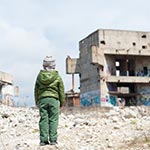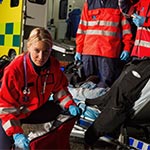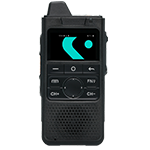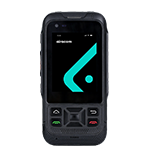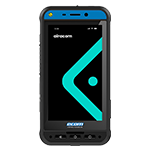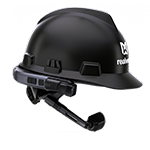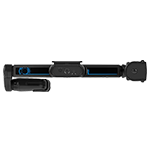IECEx Certified
IECEx equipment for potentially explosive atmospheres
The IECEx System is an international scheme that facilitates trade in equipment and services for use in explosive atmospheres by promoting global consistency and mutual recognition of equipment and services that have been certified as meeting international standards.
Organisations operating in potentially explosive atmospheres are required to adopt strict safety standards for equipment and services in order to mitigate the risk of fires or explosions caused by flammable gases or dusts. The International Electrotechnical Commission’s (IEC) System for Certification to Standards Relating to Equipment for Use in Explosive Atmospheres (IECEx) provides a globally recognised framework for the certification and testing of equipment and services intended for use in explosive atmospheres.
By ensuring that products comply with IEC standards, the IECEx scheme helps organisations minimise the risk of accidents and protect the safety of personnel, equipment, and the environment. The IECEx scheme is recognised by many countries around the world, which facilitates international trade and allows organisations to demonstrate compliance with international safety standards.
What is the IECEx system objective?
The objective of the IECEx system is to facilitate international trade in equipment and services used in explosive atmospheres by providing a globally recognised certification scheme. The International Electrotechnical Commission System for Certification to Standards Relating to Equipment for Use in Explosive Atmospheres (IECEx System) aims to promote international harmonisation of standards and conformity assessment procedures for equipment and services used in potentially explosive atmospheres.
The IECEx system is designed to provide assurance to users and regulatory authorities that equipment and services certified under the system meet the necessary international safety standards for use in potentially explosive atmospheres. It aims to reduce the need for multiple national certifications, thereby streamlining the process of international trade in equipment and services used in hazardous environments.
Facilitate international trade in equipment and services used in explosive atmospheres
Provide a globally recognized certification scheme for equipment and services used in potentially explosive atmospheres
Promote international harmonization of safety standards and conformity assessment procedures
Reduce the need for multiple national certifications, streamlining the process of international trade in hazardous environment equipment and services
Provide assurance to users and regulatory authorities that certified equipment and services meet necessary international safety standards for use in explosive atmospheres
Improve safety and reduce the risk of accidents in hazardous environments through the use of certified equipment and services.
About IECEx certifications?
IECEx enables manufacturers, regulators, and users of hazardous area equipment to address the risk of fires or explosions from flammable gasses or dusts. Equipment testing and certification to globally recognised high standards facilitate the sale of safer products worldwide while lowering costs.
The safety of commercial facilities and the people operating them depends firmly on the competencies of all responsible safety management, planning, installation, operation, inspection, and maintenance personnel. IECEx PCC (certified personnel scheme) offers the evaluation and certification of competencies of individuals. Make competent decisions around health and safety tailored to a worker’s specific job function, essential to maintaining high levels of operational safety and compliance.
Equipment and protective systems intended for use in a potentially explosive atmosphere can cover a range of locations plus many more not listed below:
Understanding hazardous areas
Hazardous area classification for the European Union ATEX directive
A hazardous area can be defined as any location where there is a build-up of explosive gasses, vapours, mists, or dusts within the atmosphere. Under the right conditions, these atmospheres can be combustible, causing fire or explosion resulting in injury, and loss of life in addition to the catastrophic operational loss to a site or facility.
The IECEx System does not determine the zones for hazardous environments. The zones for hazardous environments are determined according to the relevant national or regional regulations, such as the ATEX Directive in the European Union or the National Electrical Code (NEC) in the United States.
Once the hazardous area classification has been determined according to the national or regional regulations, the IECEx System provides a globally recognised certification scheme for equipment and services used in these hazardous areas. The IECEx certification process verifies that the equipment or service meets the relevant international safety standards for use in potentially explosive atmospheres.
Gases
Category
Gas groups are divided into subgroups based on the minimum ignition current and maximum experimental safety gap.
Zone 0
Ex II 1G
Where an explosive atmosphere is continuously present or present for long periods.
Zone 1
Ex II 2G
Where an explosive atmosphere is likely to occur in normal operation.
Zone 2
Ex II 3G
an area in which an explosive mixture is not likely to occur in normal operation and if it occurs it will exist only for a short time.
Dusts
Category
Explosive dust atmospheres consist of a mixture of the air with flammable substances in the form of dust or fibres.
Zone 20
Ex II 1D
An area in which an explosive mixture is continuously present or present for long periods.
Zone 21
Ex II 2D
An area in which an explosive mixture is likely to occur in normal operation
Zone 22
Ex II 3D
An area in which an explosive mixture is not likely to occur in normal operation and if it occurs it will exist only for a short time.
Dust Groups
Types of Dust
Dusts are divided into sub groups with IIIC dust’s are the most dangerous, while IIIB dust’s are classed as more dangerous when there is an electrostatic charge.
IIIC
Conductive Dusts
Graphite Powder, Toner
IIIB
Non-Conductive Dusts
Milk Powder, Powdered Sugar, Flour
IIIA
Fibres
Saw Dust, Tabacco
Where do you find IECEx equipment being used?
IECEx certified devices are used in a wide range of industries and applications where there is a risk of explosion due to the presence of flammable substances in the air. These industries include oil and gas, chemicals, pharmaceuticals, food processing, mining, and many more. In these industries, IECEx certified devices are used to prevent ignition sources and manage the risk of explosions. This can include explosion-proof enclosures for electrical equipment, intrinsically safe mobile devices, gas and dust sensors, and fire suppression systems.
Industries using IECEx equipment?
In addition to the list below, many other industries may also require the use of IECEx certified equipment depending on the specific hazardous environment and applications within a facility.
Pulp and Paper
Waste and Recycling
Water and Wastewater Treatment
Textiles and Clothing
Explosion protection background?
Explosion protection is the process of preventing or minimising the risk of explosions in hazardous environments where flammable substances may be present. This involves using specialised equipment and protective measures to prevent ignition sources and manage the risk of explosions. The IECEx System operates through a network of accredited certification bodies and test laboratories around the world. These bodies and laboratories are responsible for conducting conformity assessment procedures and verifying that equipment and services meet the relevant international safety standards for use in explosive atmospheres.
How are IECEx certifications awarded?
To obtain IECEx certification, equipment and services must undergo a series of tests and assessments to verify that they meet the necessary international safety standards. The certification process includes an assessment of the design and construction of the equipment or service, as well as testing to ensure that it meets the relevant safety requirements.
Once certified, equipment or services are marked with the IECEx logo, which provides assurance to users and regulatory authorities that the equipment or service meets the necessary international safety standards for use in explosive atmospheres.
Global Certifications
Global certification schemes for electronic equipment designed for use across hazardous areas
Mobile devices and communications equipment reliably tested and certified for safe operation across major industries around the world. Each industry requires focused expertise to ensure product certification that adheres to strict national and international standards.

ATEX Certified.
The European standard for the safe use of equipment where there is potential for an explosive atmosphere present.

CSA Certified.
The Canadian standard is widely adopted by companies in North America and meets North American Standards.

EAC Ex Certified.
Is the Eurasian Conformity certification for organisations operating within the EAEU, including Russia.

InMetro Certified.
Accreditation body of Brazil. Equipment must conform to INMETRO standards for use in hazardous areas.

KCs Certified.
The Korean Occupational Safety and Health Agency. KOSHA. Required for all hazardous area safety equipment.

JNIOSH Certified.
The Japanese standard and certification from the National Institute of Occupational Safety and Health.
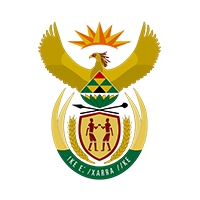
SANS Certified.
SANS is the South African National Accreditation System which governs the use of hazardous area devices.

























